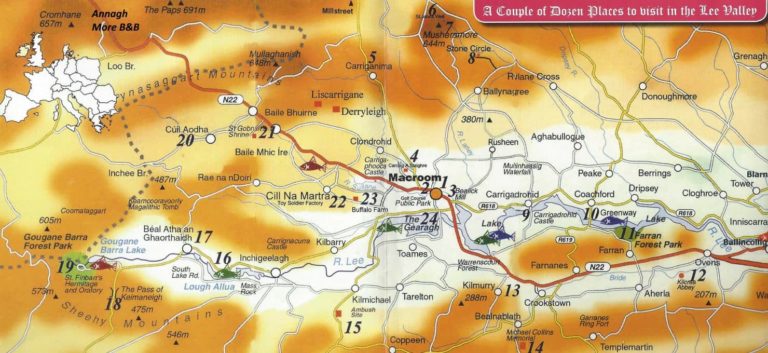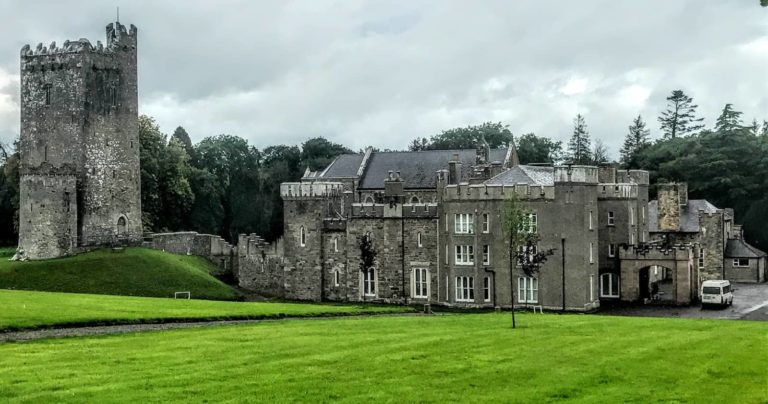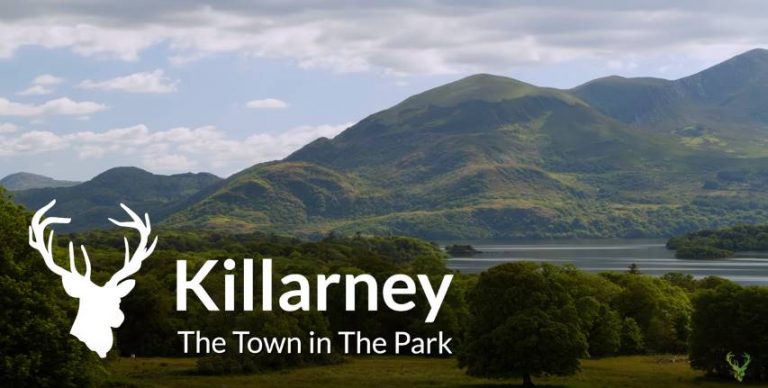There is a difference between a landscape that has always been in nature and a landscape that was once lived in and has been worked on by people. People who at a certain moment in time, have left, and left their home and land behind them. “Wasteland”.
The silence of unlaboured fields
lies like a judgement on the air
a human voice is never heard
the sighing grass is everywhere
the sighing grass, the shadowed sky
the cattle crying wearely
Where are the country people gone?
where are the sundark faces now?
the love, that kept the quiet heart?
the strength, that held the heavy plough?
Grasslands and lowing herds are good
but better: human flesh and blood.
Joseph Campbell (1879-1944)

Ireland, and especially its west coast, are full of such wastelands.
Occupied and lived upon and now steadily, after years and years, lovingly embraced by Mother Earth. They are covered in a green cloak of trees, plants and shrubs. Centuries after centuries, the Irish, preferably, did not live in towns or villages but as families in small settlements on “good spots” in harmony with nature, always near a well or floating water. The ancient remains of these “clachans” are still visible everywhere in the Irish landscape. The abundance of space makes clearing out unnecessary.
Such a place, where the ancient powers of Mother Earth slowly but surely have taken over the abandoned en sensible remains of human habitation, is Annagh More. A townland in Glenflesk near Killarney in County Kerry. An abandoned clachan, a few derelict sheds and cottages halfway on the western Pap of Anu slope. A long and winding driveway up is slowly getting greener and less passable. Once up, the silence is overwhelming and intense. Long gone human energetic remains are tangible around the trees, murmur in the shrubs and are visible in the remains of once carefully stacked walls and collapsed roofs. The elder tree grows proudly from a still surviving chimney. A weather-beaten timber front door has become inaccessible behind an exuberantly growing hedge of fuchsia and ivy. I was peeping through a gaping window hole: an abandoned chair and table, a cupboard, bold but not yet embraced by ivy and brambles.
Nature has worked hard since humans left the place: giants first seem to touch the clouds. Ash and hawthorn have free play. Ivy and bramble crawl lavishly over the field. You can hear birds whistle all around.
A skylark points to the way down, slightly below the settlement. There a bigger house is situated. Two floors, simple, robust and pure. From above, seen between the trees and bushes, apparently as abandoned as the rest. But the roof is still intact. Looking closer, two sets of French doors offer a miraculously different impression than the well-known small sash windows.
Something is going on here. Human hands are once again at work in Annagh More. A new extension with a sloping slate roof is at the house’s side. Holes in the walls point to locations where doors and windows are planned. A floor of the isolated board is patiently waiting for its finish. On the inside, the house is barren.
Carefully stripped of layers of gone human lives. Here the silence feels gay and full of expectations. Some chairs, a kitchen table, a cupboard filled with new hardware, boots, a bag, and a lunch box. Human hands once again touch the house.
The old fireplace is opened up and anxiously waiting to be lit. The house is watched again by people. Their eyes peek through the situation and imagine their dream coming into existence. Eyes see the outside through the windows and see the beauty of the land: through the trees, near and far, the endless green hills. Down the valley, on the Cork to Killarney road, just hearable, moves the modern life. Around the house, space grows again. Space of life. Green can give way again because people are returning to Annagh More. And Annagh More rejoices in their return.
And between the shrubs the Green Mother whispers:
“Be careful, humans, with your words,
be careful with your thoughts,
be thoughtful of your hand and feet.
Be humble with your deed.
For strong and holy is this place.
T’is Mother earth watched over her
for many many silent years
to show you how to live in peace
and sacred harmony.
Cherish this holy place
this ground of Annaghmore.
Awaken her most tenderly,
and she’ll revive in joy.”
(Abel Drent, Sunday July 10th, 2016 on the bus to Donegal)
Translated from Dutch by Jan Tetteroo





